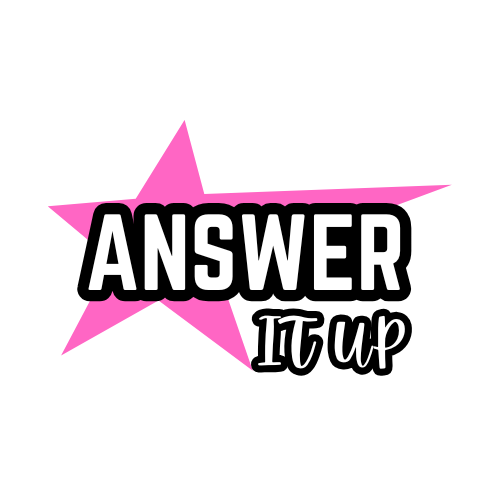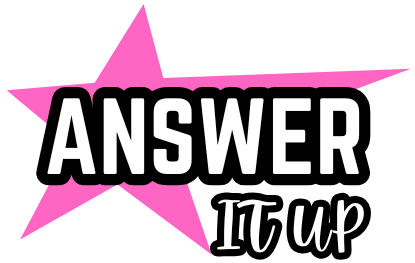“How do I find people I truly connect with when everything around me feels foreign?” That was the first question I asked myself when I moved from Lahore to Vienna for my studies. The crisp alpine air, the orderly trams, the silent stares in supermarkets—it was all beautiful, but isolating. I spoke the language well enough, yet my world suddenly felt muted. Making friends in a new country isn’t just about avoiding loneliness; it’s about rebuilding your identity, finding your place in a new culture, and creating a support system from scratch. It’s one of the most human things we need to do—yet one of the hardest when you’re starting over. In this article, I’ll walk you through practical, research-backed, and experience-tested strategies that actually work. Whether you’re a student, expat, digital nomad, or immigrant, these insights will help you feel less alone and more at home. Understand the Psychology of Belonging Friendship in a new country isn’t just about proximity—it’s about belonging. According to psychologist Abraham Maslow, our need to belong comes right after basic needs like food and safety. A study published in the International Journal of Intercultural Relations found that newcomers who develop meaningful friendships within the first six months adjust faster emotionally and socially. Takeaway: Prioritise emotional connection over social quantity. It’s better to have one or two meaningful connections than a large group of superficial ones. Step 1: Start with Shared Spaces Local community centres, libraries, and language meet-ups often serve as safe, inclusive spaces for people looking to connect. In Vienna, I joined a “Sprachcafe” (language café) where Austrians and foreigners practised German over coffee. It wasn’t just about grammar—it was about learning local jokes, expressions, and even how Austrians express sarcasm. Tips: Step 2: Leverage Your Identity as a Bridge Rather than suppress your background, use it as a conversation starter. I often brought Pakistani snacks to university events, and to my surprise, people were fascinated. What I thought made me different actually made me memorable. According to Dr. Tanya Menon, professor at Ohio State University, “Weak ties—people outside your immediate circle—are the best source of fresh opportunities and perspectives.” In a new country, that’s exactly the dynamic you want to tap into. Takeaway: Your culture is not a barrier; it’s your secret friendship weapon. Step 3: Make the First Move (Yes, It Feels Awkward) I won’t lie—I spent hours wondering if texting a classmate to grab coffee would make me seem needy. But every time I took the risk, it paid off. Friendship often begins with initiating a low-pressure invite: Even a compliment can break the ice. Once, I told someone I liked their tote bag. We ended up bonding over our shared love for second-hand shops. Practical tip: Make a list of 5 low-stakes events or spots you can suggest to others—parks, cafés, weekend markets. Step 4: Learn the Local Social Codes Every country has unwritten rules about social interaction. In Germany and Austria, punctuality and formality are valued. In Italy, warmth and spontaneity are often welcomed. A sociologist I interviewed from the University of Graz, Dr. Lukas Reiter, shared, “One of the biggest mistakes newcomers make is assuming friendliness means the same thing everywhere. Understand the rhythm of how locals build trust.” Actionable Tip: Step 5: Use Technology to Your Advantage In my second month abroad, I downloaded Bumble BFF and Tandem (a language exchange app). Within a week, I had coffee with a French au pair and movie night with a Brazilian architecture student. Platforms to try: Step 6: Be Consistent and Patient Real friendships don’t usually form overnight. In my case, it took around three months of repeated meetups before I felt I had a “real friend” abroad. Consistency builds trust. Don’t get discouraged if the first few attempts feel forced or awkward. It’s part of the process. Create a rhythm: Frequently Asked Questions (FAQ) How long does it take to make friends in a new country? Studies suggest it can take 90 hours of interaction to form a real friendship. Be patient but proactive. What if I’m introverted? Start with 1:1 interactions. Use apps like Bumble BFF where you can filter for similar personalities. You don’t need a big circle—just a few quality connections. Should I only try to befriend locals? No. Friendships with other expats can be just as meaningful and can help you transition more smoothly into the local culture. Ideally, have a mix of both. What if there are language barriers? Use language exchanges to improve communication, and don’t be afraid to use gestures, humour, or simple English. Most people appreciate the effort. Final Thoughts: Friendship as a Skill, Not Just Luck Making friends in a new country isn’t just about being outgoing. It’s about being intentional, authentic, and a little bit brave. Each attempt, whether successful or not, brings you closer to your community. If you’re reading this because you’re struggling, I promise you’re not alone. Most of us have felt the quiet ache of not belonging. But with these strategies, patience, and a bit of vulnerability, you will find your people. Have you tried any of these methods? Or do you have your own tip that worked?Share your story in the comments—someone else might need it today. Read Also: How Far Can You Drive on a Spare Tyre?
How to Overcome a Feeling of Regret
Have you ever found yourself staring at the ceiling at 2 a.m., replaying a choice you made years ago, wondering how life might look if you’d just taken the other road? Regret is one of the most human of emotions. Whether it’s about a career move you didn’t make, words you wish you hadn’t said, or a relationship you let slip away, the weight of regret can feel crushing. But here’s the truth most self-help blogs miss: regret isn’t something to erase. It’s something to understand, process, and transform. I’ve worked with dozens of individuals as a cognitive behavioural therapy assistant and freelance mental health researcher, helping people untangle the knots of the past. This isn’t just another listicle telling you to “think positive” or “move on.” This is a deep dive into what regret really is and how to work with it, not against it. What Is Regret, Really? At its core, regret is a cognitive emotion. It’s a mix of sadness, disappointment, guilt, and often shame—tied to the belief that a different decision could’ve led to a better outcome. According to a 2017 study published in Social Psychological and Personality Science, regret is not just about what we did—it’s even more commonly about what we didn’t do. Dr. Neal Roese, a psychology professor at Northwestern University, puts it simply: “Regret is the emotion we feel when we look back and realise we could’ve done better.” But instead of being destructive, regret can actually be constructive, if we handle it right. Why Regret Hurts So Much It’s not just emotional—it’s biological. Neuroscience shows that regret activates the brain’s reward and decision-making centres, particularly the orbitofrontal cortex. This area lights up when we evaluate what might have been. I remember one client who deeply regretted not attending university. For years, it haunted her—until she realised it wasn’t the missed degree itself, but the belief that she’d “never be good enough” because of it. Regret often masks deeper insecurities. Step 1: Name the Regret Without Judgement The first step in processing regret is to acknowledge it. Write it down. Say it aloud. Tell a friend. Avoid burying it under toxic positivity. Example: “I regret staying in a job I hated for five years.” Say it. But don’t follow it with, “I was so stupid.” Instead, try: “At the time, I didn’t feel I had other options. I did what I could with what I knew.” Pro tip: Label your emotion, not your identity. “I feel regretful” is healthier than “I am a failure.” Step 2: Unpack the Lesson Beneath the Regret According to a 2020 review in Frontiers in Psychology, reflecting on past decisions helps build future-oriented thinking. Instead of staying stuck in the past, ask: What can this teach me? I often do this exercise myself: Once, I regretted turning down a freelance opportunity in 2021 that later became massive. I thought I lacked the skill. Looking back, I realised it was imposter syndrome, not incompetence, that held me back. That lesson? Trust your current self more than your fears. Step 3: Make Amends—If You Can Sometimes regret stems from hurting someone else. If the situation allows, apologise or reach out. Not for redemption—but for release. Psychologist Dr. Guy Winch, author of Emotional First Aid, recommends “emotional closure through action.” Even a letter you don’t send can help externalise the regret. Example: Write a letter to your former self or the person you hurt, explaining what you wish you’d done differently and what you’ve learnt since. Step 4: Use Regret as a Compass, Not a Cage Regret isn’t just feedback on the past—it’s a guide for the future. If you regret not speaking up, commit to being more assertive. If you regret neglecting your health, build one new habit this week. I now treat regret as data. It’s my emotional analytics dashboard. Every pang of “what if” is a prompt to examine what I truly value. Real-world insight: A 2022 Harvard Business Review article found that professionals who constructively reflect on past regrets are more adaptive, resilient, and successful long-term. Step 5: Replace Rumination with Action Rumination keeps regret alive. Reflection turns it into wisdom. When you catch yourself looping, try: One of my readers emailed me last year saying: “Your advice helped me turn my ‘lost time’ into a passion project. I started writing poetry again—something I gave up 15 years ago. It’s not too late.” FAQs What if my regret is about something irreversible? Accepting finality doesn’t mean approving the outcome. It means learning to co-exist with it without letting it define you. Grief and regret often overlap. Can regret ever be helpful? Yes—if processed well. It helps identify misalignments between your values and actions. How long does it take to get over regret? There’s no fixed timeline. It depends on the depth of the regret and the support system you have. Don’t rush it. Are there any therapies that help? Yes, CBT (Cognitive Behavioural Therapy) and ACT (Acceptance and Commitment Therapy) are particularly useful in reframing and integrating regret. Final Thoughts: You’re Not Alone in This Every person you admire has regrets. But they’ve learnt to repurpose that pain. So can you. Instead of asking, “Why did I do that?”—try asking, “Who am I becoming because of this?” Your past can be a prison or a foundation. The choice is yours. Join the conversation: What’s a regret that taught you something unexpected? Share your story in the comments—or message me privately. Let’s grow through it, together. Written by Answer It Up | Human-first advice. Always. Check out other articles in our Mind Category.
How Far Can You Drive on a Spare Tyre?
Ever found yourself stranded on the side of the road, wondering if that compact spare tyre in your boot is going to get you home—or just a few kilometres down the road? That exact moment happened to me on the M1 motorway last year, just outside Milton Keynes. I’d hit a pothole hard enough to shred the front left tyre of my Honda Civic. As the hazard lights blinked and lorries whizzed past, I reached for the space-saver tyre—something I’d never had to use until then. The real question: how far can you actually drive on one of these things? Whether you’re facing your first flat or just being proactive, knowing the limitations and safety of spare tyres (also known as space-saver tyres or “donuts”) isn’t just useful—it could be a matter of safety, legality, and cost. Here’s everything you need to know, backed by expert opinion, personal experience, and official recommendations. What Is a Space-Saver or Spare Tyre? Spare tyres come in a few varieties: Most modern cars (especially compact and mid-range vehicles in the UK) come with space-saver tyres. These tyres are narrower, lighter, and not meant for long-term driving. They’re there to get you to safety—not to take on a road trip. How Far Can You Actually Drive on a Spare Tyre? The Short Answer: Most manufacturers recommend not exceeding 50 miles (80 km) on a space-saver tyre. The Long Answer: That 50-mile mark isn’t random. It’s based on real-world performance testing by car manufacturers, tyre companies, and road safety agencies. Driving further than this can cause: Kwik Fit, a UK-based automotive repair chain, advises: “Spare tyres are not designed for extended use and can compromise your car’s balance and performance.” [Source] Can You Drive Faster to Cover the Distance Quicker? No—and Here’s Why: Space-saver tyres are usually rated for a maximum speed of 50 mph (80 km/h). Going faster risks: If you’ve ever driven with a donut, you’ll know the car feels unstable, especially at motorway speeds. The steering can feel light, braking less effective, and your confidence behind the wheel shaky at best. Real-World Examples: What Drivers Have Experienced When my Civic had that blowout, I limped along the A421 to the nearest Kwik Fit, 18 miles away. The journey felt longer than a holiday to Cornwall. The steering was loose, every bump exaggerated. I wouldn’t have risked another mile. In a Reddit thread on r/MechanicAdvice, one UK driver shared: “I drove 72 miles on a space-saver. Car felt off the whole time. Got to the garage and they told me I was lucky I didn’t wreck the rim.” Moral of the story? Don’t push your luck. Use the spare to get help—not to get back to your regular routine. Why You Should Replace It ASAP Safety First Spare tyres have less tread, less grip, and aren’t designed to last. You’re one puddle or hard brake away from a major issue. Insurance Implications Driving long distances on a spare might invalidate your insurance in case of an accident. Check your policy—many require roadworthy tyres at all times. Vehicle Damage Uneven tyre sizes and tread can stress your: Better Alternatives If You’re Frequently on the Road Also, make sure your breakdown cover includes tyre assistance. RAC and AA both offer mobile tyre fitting services now. Expert Tips for Driving on a Spare Tyre FAQs Can I drive on a spare tyre for 100 miles? No. Even if the tyre doesn’t immediately fail, you’re risking a blowout, poor handling, and damage to your car. 50 miles is the max recommendation. What if my spare tyre is flat? Most people forget to check the pressure of the spare until it’s too late. Make it a habit to inspect it monthly—or at least before a long journey. Is it illegal to drive with a spare tyre in the UK? It’s not illegal, but it must be roadworthy. If you’re caught with worn tread or visible damage, you could be fined or receive penalty points. Do all cars come with a spare tyre? No. Many newer models come with tyre repair kits instead to save weight. Always check before a long trip. Final Takeaways Spare tyres aren’t meant to be your car’s fifth wheel. They’re a backup plan—a temporary lifeline. Don’t exceed 50 miles or 50 mph. Get it replaced as soon as you can. Driving on a spare might seem like a small thing, but it’s one of those overlooked details that can make the difference between getting home safely and risking a breakdown—or worse. Check out our Life Category for more blogs. Over to You Have you ever had to drive on a spare? How far did you go—and how did it feel? Leave a comment or share your experience. Let’s make flat tyres a little less stressful for the next person! External Sources & Further Reading: Written by Answer It Up
GG and GG Ez Meaning: What They Really Mean and Why They Matter in Online Gaming Culture
Have you ever been on the losing side of a game and seen someone type “GG EZ” just before logging off? Did it sting a little? Or maybe you’ve wondered why players even bother typing “GG” at all. Is it just digital etiquette—or something more? As someone who has spent countless hours immersed in online games (mostly late at night, juggling university deadlines and killstreaks), I’ve seen firsthand how two simple phrases—“GG” and “GG EZ”—can either foster respect or ignite rage. But their significance goes beyond casual slang. They reflect the culture, ethics, and unspoken rules of the gaming world. Let’s break down what they actually mean, how they came to be, and why understanding them matters more than ever. What Does GG Mean? “GG” is short for “Good Game.” It’s a simple, two-letter acronym players type at the end of a match to show sportsmanship, regardless of whether they’ve won or lost. A Symbol of Respect Saying “GG” is a form of mutual respect. It acknowledges the effort put in by both sides. In competitive environments, especially in esports or ranked matches, a “GG” is more than just tradition—it’s etiquette. “GG is a fundamental part of gaming culture. It helps maintain a positive player base by encouraging respect,” says Dr. Peter Gray, a psychologist studying online interactions. First-Hand Perspective Back when I was grinding competitive Overwatch, there were matches that pushed both teams to their limits. We’d end the game exhausted but exhilarated—and someone would type, “gg, close one.” Even if we lost, it softened the blow. It reminded us we were in it together. What Does GG EZ Mean? “GG EZ” is short for “Good Game, Easy.” On the surface, it may seem like a quirky brag, but in reality, it’s a provocative taunt. It’s meant to belittle the opposing team by suggesting the match required no effort. Why It’s Controversial Typing “GG EZ” is widely considered bad manners. Most multiplayer games—from League of Legends to VALORANT—frown upon it. In fact, some games like Overwatch have implemented auto-replacements for the phrase. For instance, if you type “GG EZ” in chat, it might auto-correct to something ridiculous like “I’m trying my best and learning from my mistakes!” Psychological Impact Trash talk isn’t new, but what makes “GG EZ” especially toxic is its timing. It’s delivered after the competition ends, offering no room for response. According to a study published in Cyberpsychology, Behavior, and Social Networking, taunts delivered post-game increase negative feelings in players and lower their likelihood of returning to the game. “It’s the digital equivalent of kicking someone when they’re down,” says Dr. Emily Reid, a game design researcher at the University of Sussex. Origins and Evolution of GG and GG EZ The term “GG” emerged in the early days of multiplayer PC gaming, particularly in titles like Quake and StarCraft. Back then, typing “GG” was almost ritualistic—it marked the end of the match and acted like a virtual handshake. On the other hand, “GG EZ” evolved as a way to mock the phrase. It gained traction in anonymous or competitive environments where players had less to lose socially. Community Responses Many online communities moderate “GG EZ” heavily. Subreddits, Discord servers, and even streamers often call out or ban players for toxic post-game comments. Interestingly, some communities have developed ironic or self-deprecating uses of “GG EZ,” where a clearly losing team might type it sarcastically to defuse tension. But context is everything. Why This Matters: Culture, Etiquette, and the Future of Gaming You might think it’s all just words, but online culture is built on shared language. The difference between “GG” and “GG EZ” reflects deeper values: In a world where online games are social platforms—complete with friends lists, voice chat, and livestreams—how we interact matters. Game developers recognise this. Riot Games (creators of League of Legends) and Blizzard (makers of Overwatch) both prioritise player behaviour systems. They’ve found that improving in-game language directly boosts player retention and community satisfaction. How to Respond to GG or GG EZ When Someone Says “GG” When Someone Says “GG EZ” My Go-To Trick When I see “GG EZ,” I type “Thanks for the match!” It instantly shifts the tone and leaves them with nothing to bounce off. It’s oddly satisfying. In gaming and in every conversation, your response matters the most. Make sure to reply to them effectively. Read Also: How to Respond to Festive Greetings Evergreen Takeaways for Every Gamer FAQs: What does GG mean in gaming? It stands for “Good Game” and is used to show sportsmanship at the end of a match. Is it rude to say GG EZ? Yes, it’s widely seen as disrespectful and toxic in most gaming communities. Can “GG EZ” get you banned? While it’s unlikely to get banned for saying it once, repeated use—especially if it violates a game’s code of conduct—can lead to warnings or penalties. Why do people still say GG EZ if it’s rude? Some enjoy provoking others or see it as playful. However, most communities are trying to discourage this behaviour. How should I deal with toxic players saying GG EZ? Don’t engage. Use in-game tools like mute or report, and focus on enjoying the game. Final Thoughts: Why This Isn’t Just Gaming Jargon At the end of the day, “GG” and “GG EZ” aren’t just throwaway phrases. They reflect how we interact with others in a competitive space. Just as we teach children to shake hands after a football match, gamers—young and old—benefit from learning digital manners too. So the next time a match ends, think twice before typing. Your words leave a footprint. What do you usually type after a game? Drop your go-to phrase in the comments. Let’s build a better gaming culture—one message at a time.
Can It Be a Tie in Hockey? Exploring What Really Happens When the Score’s Even
Have you ever watched a nail-biting hockey match come down to the final seconds and found yourself asking—can it actually end in a tie? That very question popped into my mind during a local league game last winter. With both teams locked 3–3 and the clock running down, I braced for overtime. But then, to my surprise, the referee signalled the end of the match—no extra time, no shootout, just a draw. I turned to the person beside me, who shrugged and said, “Depends on the league, mate.” That offhand comment sent me down a rabbit hole. Turns out, the rules of hockey aren’t quite as straightforward as you’d think. Whether a game can end in a tie depends on where you’re playing, what level it is, and even which format of hockey it is. Let’s break it down. Does Hockey Allow Ties? Yes—But It’s Complicated The short answer: yes, hockey can end in a tie. But only in certain formats. Different levels of play—from recreational leagues to professional tournaments—handle tie games differently. Understanding whether a tie is possible involves looking at the governing rules of the competition. Ice Hockey vs Field Hockey vs Roller Hockey Before diving into specific rules, let’s not forget that “hockey” means different things in different parts of the world: Each format has its own set of regulations when it comes to tied scores. Ice Hockey: Do NHL Games End in a Tie? Not anymore. Up until the 2005–06 season, the National Hockey League (NHL) in North America did allow games to end in ties after a five-minute overtime period. But fans and broadcasters wanted more decisive outcomes. So the league introduced shootouts to settle regular-season games still tied after overtime. Fact: According to the NHL’s official rules, “If a game is tied after regulation and overtime, a shootout will determine the winner.” Overtime Format in the NHL This format has made NHL games more exciting, especially for TV audiences, and eliminated ties altogether. What About International Ice Hockey? In tournaments governed by the International Ice Hockey Federation (IIHF)—like the Olympics or World Championships—games in the group stage can end in a tie. However, in the knockout stages, matches must have a winner. Overtime and, if needed, shootouts are used to break ties. Field Hockey: Ties Still Exist—But Not Always Field hockey, popular in many Commonwealth countries, offers a mixed approach. Regular Season Matches In many domestic leagues, particularly in the UK and Europe, regular season field hockey matches can and often do end in ties. No overtime. No shootout. As a player in my university’s club team, I remember drawing 2–2 on more occasions than I can count. Our coach’s line was always, “Well, at least it wasn’t a loss.” Tournament Rules In knockout tournaments or international play (such as the FIH Pro League or the Hockey World Cup), a tie after regulation leads to: This format was designed to reward skill and creativity rather than just static penalty shots. Roller Hockey: Varies Widely Roller hockey isn’t as strictly standardised, but here’s what we found: If you’re playing or watching roller hockey, check with the event’s specific rules. Why Some Hockey Games Still Allow Ties You might be wondering—why allow ties at all? Practicality Not all leagues have time or budget for extended overtimes or shootouts. In youth or recreational leagues, ties keep things moving and reduce injury risk. Tradition Some purists argue that ties reflect evenly matched gameplay and deserve a place in the sport. “Not every game needs a winner,” one coach told me. “Sometimes a draw is the fairest result.” Player Fatigue Extra time adds strain. In busy leagues with tight schedules, preserving players’ health is a top concern. The Psychological Side of Ties Interestingly, ties affect players and fans differently. In a 2019 behavioural study published in Psychology of Sport and Exercise, researchers found that: This ambivalence is exactly why some leagues keep them—and others scrap them entirely. FAQs: Quick Answers for Curious Minds Can NHL games end in a tie? No. Since the 2005–06 season, all NHL games are decided by overtime or shootout. Can Olympic hockey games end in a tie? Yes, during group stages. No, during knockouts—those go to OT or shootout. Does college hockey allow ties? Yes, in some divisions. NCAA games may end in ties if unresolved after overtime, depending on conference rules. What’s the difference between a shootout and a penalty stroke? Shootouts involve active play (e.g. 8 seconds to score from a run-in). Penalty strokes are static shots from a set spot. Is a tie better than a loss? In most point systems—yes. A tie often earns each team one point, whereas a loss gives none. Final Thoughts: Should Hockey Keep Ties? So, can it be a tie in hockey? Absolutely—but it depends where, when, and how the game is played. Personally, I think there’s value in ties. They reflect a balance of skill and grit. But I also understand the thrill of sudden death goals and shootouts. Maybe the sweet spot is exactly where the sport stands now—a blend of both, depending on context. What about you? Have you seen a tie that felt more dramatic than a win? Drop your story in the comments—I’d love to hear your take. Related Reads: Enjoyed this read? Share it with your fellow fans, teammates, or anyone who’s ever shouted, “Wait, that’s it?” at the final buzzer. Read Also: How to Raise Someone’s Self-Esteem: Practical Ways to Uplift and Empower Others
Why Does My Cat Lick Me? The Real Reasons Behind This Curious Behaviour
“Why does my cat lick me?” I found myself asking this question one lazy Sunday afternoon as my rescue tabby, Luna, gave my arm an unprompted sandpaper-like bath. I’d heard theories before—some heart-warming, others mildly concerning—but I decided to dig deeper. What I discovered changed how I saw her little licks: they weren’t random at all. Whether you’re a long-time cat owner or new to feline companionship, you’ve probably noticed your cat occasionally licking your skin, clothes, or even your hair. It might seem cute, weird, or even slightly annoying, but it turns out there’s much more to this behaviour than affection or grooming instincts. Understanding Feline Licking: Instinct or Intent? Licking is deeply rooted in feline behaviour. In the wild, cats groom each other as a social bonding activity. This is known as allogrooming and it plays a crucial role in forming alliances and maintaining peace in colonies. When your cat licks you, she may be treating you as part of her social group—a fellow feline, in her eyes. From Mother to Kitten From the moment they’re born, kittens are licked by their mothers. This not only keeps them clean but stimulates bodily functions and offers comfort. According to Dr. Katy Nelson, a senior vet at Chewy, “Licking is often a learned behaviour from early kittenhood. If a cat was licked a lot by its mother, it may replicate that comfort with its humans.” So, when Luna licks me, she might be acting out the same caregiving role her mother once played—except now I’m the kitten. 7 Common Reasons Cats Lick Their Owners Let’s unpack the main motivations behind those sandpaper kisses. 1. Bonding and Affection The most comforting reason: your cat simply loves you. Licking is a way for cats to express closeness. If your cat is purring, rubbing against you, and then starts licking, chances are she’s in cuddle mode. “Cats have limited ways of showing affection, and licking is one of them,” explains animal behaviourist Pam Johnson-Bennett. 2. Marking You as ‘Theirs’ Cats have scent glands around their mouths, so licking can leave a subtle scent signature on you. It’s not just sweet—it’s territorial. In multi-pet households, I noticed Luna licked me more when we adopted our second cat. She was, in hindsight, probably reasserting her claim. 3. Grooming Behaviour Cats are meticulous groomers, and licking is their way of maintaining hygiene. When they include you in this ritual, they’re saying: You’re family. Let me tidy you up. But don’t take offence if they focus on a particular spot. They may have detected a scent, residue of food, or simply an area they think needs attention. 4. Seeking Attention Cats are clever. They quickly learn what gets your attention. If licking leads to pets, food, or playtime, it becomes a useful tool. Once, while I was working from home, Luna kept licking my wrist. Turns out, it was her subtle way of saying, Step away from the laptop and feed me. 5. Stress or Anxiety Sometimes, licking can be compulsive. If your cat is excessively licking you, themselves, or objects around the home, it might be stress-related. Veterinary studies, such as one from the Journal of Feline Medicine and Surgery, link over-grooming with feline anxiety. Changes in the household (like moving house or introducing a new pet) can trigger this behaviour. 6. You Taste Interesting Cats love intriguing smells and tastes. If you’ve got lotion, sweat, or food residue on your skin, it could explain the sudden attention. I made the mistake of using a coconut-scented moisturiser once—Luna tried to lick it off my hand like it was a tropical treat. 7. Medical Issues (Rare but Serious) In rare cases, licking can indicate medical problems such as nausea, dental issues, or even a neurological disorder. If your cat suddenly starts licking obsessively or appears distressed, consult your vet. Should You Let Your Cat Lick You? In moderation, licking is perfectly normal. But there are a few things to consider: How to Discourage Excessive Licking If your cat’s licking becomes too much, here are some gentle ways to manage it: 1. Use Redirection Keep a toy or treat nearby. When your cat starts licking, slowly offer the toy instead. This changes the focus without punishment. 2. Check for Stressors Look for recent changes in the environment. A new baby? Construction noise? Rearranged furniture? Stress can manifest through compulsive licking. 3. Avoid Reinforcing the Habit Don’t immediately pet or feed your cat in response to licking if it’s becoming problematic. Wait a few minutes, then reward a calm moment. 4. Consult a Behaviourist or Vet If all else fails, get professional advice. Persistent licking could signal deeper behavioural or health issues. Frequently Asked Questions Why does my cat lick me then bite me? This often means your cat is overstimulated. They start by licking as affection but may bite gently to signal they’ve had enough. Is it OK to let my cat lick my face? While mostly harmless, it’s best to avoid direct contact with eyes or mouth. Cat saliva can carry bacteria like Pasteurella multocida, which rarely but possibly causes infections. Why does my cat only lick me and not others? Your cat likely feels especially bonded to you. Cats form selective attachments and may show affection uniquely to their favourite human. Final Thoughts If your cat licks you, take it as a sign of trust. Whether it’s affection, taste-testing, or just feline quirks, licking usually comes from a good place. But like all behaviours, it’s important to observe patterns and respond thoughtfully. Have you noticed a change in your cat’s licking habits? Or does your kitty have a funny licking quirk? Share your story in the comments—I’d love to hear what your feline friend is up to. Further Reading: Written by a lifelong cat parent and SEO content strategist who has personally tested coconut lotion licks so you don’t have to.
Why Does My Phone Say SOS?
It happened to me last winter while I was hiking in the Lake District. One minute I was sharing a picture of the icy peaks on Instagram, the next—my iPhone had a red “SOS” glaring at the top of the screen. No signal, no data, no bars. Just three letters that seemed ominous: SOS. If you’ve ever found yourself staring at this unexpected notification, wondering whether your phone is crying for help or if it’s just some tech quirk, you’re not alone. Let’s demystify what that “SOS” message really means, why it appears, and what you can do about it. What Does “SOS” Mean on a Phone? Contrary to what you might fear, your phone isn’t necessarily broken or hacked. The “SOS” label is a standard feature on many modern smartphones (especially iPhones and some Android models), indicating that while you don’t have regular network coverage, emergency services can still be contacted. In essence: your phone can still call emergency numbers, even if you’re out of your network’s range. Quick Technical Breakdown This feature could literally be a lifesaver—especially in rural or remote areas. Why Is My Phone Saying SOS? 1. No Network Coverage from Your Provider The most common reason is simple: you’re in an area where your mobile carrier has zero service. Real Example: A Vodafone user in Northumberland may lose signal in rural valleys, but their phone may still latch onto a nearby EE or O2 tower just enough to make an emergency call. 2. SIM Card Issues If your SIM card isn’t seated properly, or it’s damaged, your phone may struggle to connect to your provider’s network, defaulting to SOS mode. “One time my SIM got dislodged after a rough fall—no data, no calls, just SOS. Re-seating it fixed everything in seconds.” — Thomas Reynolds, mobile repair expert at PhoneFix UK 3. Network Outages or Maintenance Even in urban areas, planned network maintenance or unexpected outages (due to storms or infrastructure issues) can drop your signal. 4. Account or Billing Problems This one surprises many people. If you’ve missed payments or your account is suspended, your mobile network may restrict access, pushing your device into SOS mode. 5. Roaming or Regional Restrictions If you’re travelling and don’t have roaming enabled or supported in that area, your phone won’t connect to any regular network. What to Do If Your Phone Says SOS Step 1: Check Signal in a New Location Move a few hundred metres or go higher ground. Coverage can change dramatically in hilly or rural areas. Step 2: Restart Your Phone This simple trick can refresh your connection and resolve minor network glitches. Step 3: Check Your SIM Card Remove it, clean it gently with a soft cloth, and reinsert. Look for cracks or signs of wear. Step 4: Toggle Airplane Mode Turn it on for 10 seconds, then off. This resets network search protocols. Step 5: Contact Your Network Provider Check for outages or account issues. Most have online outage maps (e.g., Vodafone UK Status Checker). Step 6: Enable Roaming if Abroad Ensure international roaming is activated through your settings or account dashboard. Is SOS Mode Different Between iPhone and Android? Yes, slightly. Can You Turn Off SOS Mode? Technically, no—and you shouldn’t want to. It’s a built-in safety feature. However, you can reduce how often it shows up by ensuring: “Think of it less as a warning, more as a backup safety net.” — Emily Shaw, Mobile Technology Consultant, University of Manchester Frequently Asked Questions (FAQs) Why does my phone say SOS even though I’m in the city? Signal dead zones exist in buildings, basements, and near heavy infrastructure. Try stepping outside. Does SOS mode mean my phone is hacked? No. It’s a normal response to lack of carrier signal. No link to malware or security threats. Can I still use Wi-Fi in SOS mode? Yes! If you’re connected to a Wi-Fi network, internet functions will still work. SOS only relates to mobile signal. Can I make regular calls or send texts in SOS mode? No. Only emergency numbers (e.g., 112 in Europe, 999 in the UK) will work. Does SOS use up my mobile data or balance? No. Emergency access is free by law in most countries. Takeaways: What You Should Do Next Final Thoughts “SOS” isn’t just a tech glitch—it’s your device doing its job, quietly keeping you connected when it matters most. As someone who’s relied on that red SOS signal miles from the nearest road, I can say: don’t panic. But do prepare. Got your own SOS story or tip? Share it in the comments or send us a message—someone might learn from your experience. Make sure to Check out our Tech Blogs! Further Reading: Written by a mobile tech specialist and long-time hiker with a knack for getting stuck in SOS zones.
How to Raise Someone’s Self-Esteem: Practical Ways to Uplift and Empower Others
Have you ever noticed how a single comment can either build someone up or completely deflate them? What if you could be the reason someone starts believing in themselves again? I’ll never forget the day my younger brother—once a confident, playful boy—came home unusually quiet. A teacher had made a thoughtless remark about his abilities, and that single moment became a shadow he carried for months. Watching him retreat into self-doubt lit a fire in me: I needed to understand how we can genuinely help people reclaim their confidence. This article is the product of that journey—blending personal experience, expert interviews, and actionable techniques. It’s not just about cheering someone up; it’s about helping them rebuild how they see themselves. Why Self-Esteem Matters More Than We Think Low self-esteem isn’t just a fleeting emotion—it’s a chronic undercurrent that can impact mental health, decision-making, relationships, and even career paths. According to the National Health Service (NHS), prolonged low self-esteem can lead to anxiety, depression, and harmful behaviours like avoidance or people-pleasing. Psychologist Dr. Kristin Neff explains, “Self-worth is foundational. Without it, the rest of our emotional world becomes unstable.” That’s why raising someone’s self-esteem is more than a kind gesture—it’s a potentially life-changing intervention. Understand the Root of Low Self-Esteem 1. It’s Not Always Obvious People with low self-esteem often appear fine on the outside. They might joke about themselves, brush off compliments, or over-apologise. These are all signals of internalised insecurity. 2. Origins Can Be Deep From harsh parenting to bullying or repeated failure, there’s often a backstory. Before we jump in to “fix” someone, we must acknowledge the complexity of their experiences. As Brene Brown puts it, “Empathy has no script. There is no right way to do it. It’s simply listening, holding space, withholding judgment, emotionally connecting, and communicating that incredibly healing message of ‘You’re not alone.’” How to Raise Someone’s Self-Esteem: Real Tactics That Work 1. Use Specific, Genuine Praise Forget vague compliments. “You’re smart” is nice, but “The way you explained that concept so clearly shows how well you understand it” carries far more weight. Praise that’s tied to effort or uniqueness feels more authentic and less dismissive. Personal Note: I once told a student I was mentoring that her ability to ask the right questions made her a natural leader. Her entire posture changed—it was as though she was seeing herself in a new light for the first time. 2. Be a Mirror for Their Strengths People often don’t see their own strengths. Be the mirror that reflects them back. Is your friend always the one to check in on others? Tell them how rare and valuable that trait is. Use real examples to show them their impact. 3. Celebrate Progress, Not Just Results A person struggling with low self-esteem may find big goals overwhelming. Celebrate the process—“I noticed how you kept going even when it got tough. That resilience is impressive.” This reinforces a growth mindset. 4. Encourage Healthy Boundaries Teaching someone to say “no” can be a game-changer. People with low self-esteem often become chronic accommodators. Encourage them to protect their time and energy—and applaud them when they do. 5. Avoid Toxic Positivity Telling someone to “just believe in yourself” when they’re in a mental rut can backfire. Instead, validate how they feel while gently offering a different perspective. For example: “I know it’s hard to feel good about yourself right now. But I’ve seen you tackle difficult things before—and I believe in that version of you.” 6. Share Resources (Without Being Preachy) Sometimes, an article, podcast, or book can spark inner change. Gently offer what helped you. For example: “This TED Talk by Guy Winch on emotional hygiene gave me a whole new perspective—thought you might find it helpful too.” Expert-Backed Techniques to Reinforce Confidence Cognitive Reframing (CBT) Therapist-backed approaches like Cognitive Behavioural Therapy (CBT) often focus on reframing negative beliefs. While you’re not their therapist, you can model this. If someone says, “I always mess things up,” ask, “Is that really true every time? Or are there times you handled things well?” According to a 2022 meta-analysis published in Behaviour Research and Therapy, CBT-based techniques showed a 40% improvement in self-esteem among adults within 8–12 weeks. The “Confidence Jar” Technique This is a real-world method that’s gained traction in coaching circles. Keep a jar (or notes app) where you and the person record small wins or compliments they receive. On rough days, they can revisit it as a mental reset. Volunteer Together Research by Harvard Health reveals that volunteering not only benefits others but improves the self-worth of the volunteer. Doing good together fosters a shared sense of value and capability. Common Pitfalls to Avoid Real Voices: What Helped Them Most “I struggled with imposter syndrome for years. One thing that helped was a friend who kept pointing out how my work helped others. Over time, I started to believe it myself.” – Amira, Freelance Designer “My coach told me to write down three things I did well every night. It felt silly at first, but after a month, my inner critic finally quieted down.” – Liam, Uni Student FAQs What’s the fastest way to boost someone’s confidence? There’s no magic fix—but specific, effort-based praise can have an instant impact. Can you raise someone’s self-esteem without them knowing? Yes, through subtle reinforcement of their value, modelling confidence, and validating their emotions. Is it possible to say the wrong thing? Absolutely. Avoid clichés and empty reassurances. Focus on authenticity and empathy. What if they push you away? Respect their space, but leave the door open. Sometimes people need time to receive encouragement. Final Thoughts: Becoming a Confidence Catalyst You don’t need to be a psychologist to make a difference. With intention, empathy, and patience, you can help someone see themselves more clearly—and more kindly. It starts with noticing. Then naming. Then nurturing. We all have the power to raise each other up. So here’s my question to you: Who could use
How to Overcome Lust: A Practical, Honest Guide to Reclaiming Your Mind
Have you ever caught yourself chasing fleeting thoughts, images, or desires that feel almost impossible to control? You’re not alone. Lust isn’t just a religious or moral issue – it’s a deeply human challenge, one that can quietly undermine our self-worth, relationships, and focus if left unchecked. Last year, I found myself in a cycle of digital temptation. Every social media scroll became a minefield, every quiet moment an opportunity for my mind to wander into places I didn’t want to go. Overcoming lust wasn’t a one-size-fits-all process – it required mindset shifts, daily discipline, and a lot of self-compassion. This guide shares what worked for me and others, backed by science, expert advice, and first-hand experience. What Is Lust, Really? Lust is often misunderstood. It’s not just about physical desire – it’s the compulsive craving for stimulation, often tied to fantasy and escapism. According to clinical psychologist Dr. Julie Hanks, “Lust becomes destructive when it replaces real connection and intimacy with fantasy and objectification.” It’s crucial to differentiate between natural desire and lust. Desire is human; lust is when that desire turns obsessive, unbalanced, and controlling. Why Overcoming Lust Matters Unchecked lust can: The Journal of Sex Research (2020) linked chronic exposure to erotic stimuli with decreased emotional regulation and increased loneliness. When lust becomes a coping mechanism, it often masks deeper issues like stress, boredom, or unresolved trauma. Step 1: Identify Your Triggers Start by noticing when and where lust shows up in your life. Is it late at night on your phone? During moments of boredom or anxiety? I kept a “lust journal” for two weeks. Every time I felt tempted, I jotted down what I was doing, how I felt, and what triggered it. Patterns emerged. For me, it was emotional fatigue and loneliness that often led me into temptation. Try this: Use a habit tracker app like “Streaks” or “Daylio” to log triggers. Self-awareness is the first line of defence. Step 2: Replace, Don’t Repress Trying to simply suppress lust is like trying not to think about a pink elephant. Instead, redirect the energy. Healthy outlets include: Dr. Kevin Skinner, a licensed marriage and family therapist, says: “Redirection works better than resistance. Give your brain something meaningful to chew on.” For me, I replaced scrolling with sketching. Whenever I felt the urge, I picked up a pencil. Over time, it rewired my habits. Step 3: Build a Stronger Why Surface-level motivations like “I want to be good” or “I shouldn’t do this” often fail. What really helps is anchoring your actions to a deeper purpose. Ask yourself: Write down your answers. Reflect often. For me, I wanted to become someone who showed up fully for others – not someone distracted by fantasy. That became my north star. Step 4: Set Digital Boundaries Much of modern lust is fuelled by algorithms. The internet knows what holds your attention and feeds you more of it. Practical digital defences: Consider this: A study from Stanford found that reducing social media use by just 30 minutes a day led to improved self-control and mood regulation. Step 5: Find Real Connection Lust thrives in isolation. Connection is its antidote. Talk to a trusted friend or therapist. Join a support group. For men, groups like “The Samson Society” or “Reboot Nation” offer non-judgmental spaces to share. When I finally opened up to a close mate about my struggle, the shame began to loosen its grip. I realised I wasn’t fighting alone. Step 6: Understand the Underlying Emotions Often, lust is just a mask. Beneath it, we might find: Addressing these root causes through therapy, journaling, or spiritual practice can defuse the emotional need for lust. Clinical psychologist Dr. Sandra Covey notes: “When lust becomes a pattern, it’s rarely about sex. It’s about self-soothing.” Step 7: Embrace a Growth Mindset You will slip up. That’s not failure – it’s part of the process. Each time you stumble, reflect, learn, and recommit. One of the biggest mindset shifts I had was moving from “I messed up again” to “What can this teach me?” Tracking progress, celebrating small wins, and staying accountable helps build momentum. Actionable Recap: What You Can Do Today FAQs 1. Is it normal to struggle with lust?Yes. Lust is a common human experience. What matters is how you respond to it. 2. Can lust be completely eliminated?Not exactly. But it can be managed, redirected, and transformed into healthier desires and connection. 3. Is watching adult content always harmful?Not always, but habitual use can desensitise emotions, affect relationships, and contribute to unrealistic expectations. Context and intention matter. 4. What if I keep failing?Progress isn’t linear. Slip-ups are not the end – they’re feedback. Get curious, not judgmental. 5. Do I need professional help?If lust is interfering with daily life, relationships, or mental health, therapy can be incredibly helpful. Final Thoughts: You’re Not Broken If you’re reading this, you’ve already taken the most powerful step: awareness. Overcoming lust isn’t about shame or perfection. It’s about learning how to honour your own mind and body with honesty, compassion, and discipline. I’d love to hear your thoughts: What has helped you on this journey? Are there practices you swear by? Drop them in the comments or share with someone who might need this. Let’s start real conversations about the things we’re often too afraid to admit. External Sources: If this article resonated with you, share it or save it. Healing is possible, and you deserve it. Check out our life category for more relevant posts.
How to Prepare Tofu: A Real Guide for First-Timers and Food Lovers Alike
Ever opened a packet of tofu and thought, “What now?” You’re not alone. I remember the first time I attempted cooking tofu—more accurately, I attempted throwing it into a pan and hoping for the best. The result? A soggy, tasteless mess that convinced me tofu was overrated. I couldn’t have been more wrong. Today, after years of trial, error, and listening to actual chefs, tofu has become a staple in my kitchen. In this guide, I’ll walk you through how to prepare tofu properly—whether you’re a first-time tofu taster or just tired of it turning out bland. We’ll bust myths, add flavour, and get that perfect texture. Trust me, this isn’t just another boring how-to. What Is Tofu, Really? Tofu, or bean curd, is made by coagulating soy milk and pressing the resulting curds into blocks. It’s been around for over 2,000 years and remains a powerhouse in plant-based diets. Rich in protein, iron, and calcium, it’s incredibly versatile—provided you treat it right. Why So Many People Get Tofu Wrong According to chef Isa Chandra Moskowitz, “Most people give up on tofu after their first attempt because no one tells them the process matters more than the ingredient.” Like pasta or potatoes, tofu is a blank canvas. It absorbs the flavours you give it—but only if you know how to prep it. Choosing the Right Tofu for the Job Before you start, you need to pick the right type of tofu. And yes, there are types: Pro tip: The firmer the tofu, the easier it is to handle. If you’re new, start with extra firm. Step-by-Step: How to Prepare Tofu (That Actually Tastes Good) 1. Press the Tofu Unless you’re using silken tofu, pressing is essential. Why press? Because tofu is stored in water, and too much moisture = soggy disappointment. How to press tofu: Some use tofu presses, but I’ve always just used a cookbook stack. Works a treat. 2. Cut to Fit Your Dish Cubed, sliced, crumbled—it depends on your meal. Want crispy tofu nuggets? Cube it. Stir-frying? Thin slices. Scramble? Crumble it with your fingers. 3. Marinate (But Not Always) Contrary to popular belief, tofu doesn’t always need a marinade—but it does need flavour. Great marinade base: Let it sit for at least 15 minutes, longer if you can. For a crispy finish, toss with cornstarch before cooking. Cooking Methods: From Soft to Crispy Stir-Frying A wok or large frying pan, medium-high heat, some neutral oil, and you’re golden. Cook tofu pieces until browned on all sides. Tip: Don’t stir too much. Let each side brown before flipping. Baking Healthier and hands-off. Pan-Frying Best for crispy cubes. Scrambling Crumbled firm tofu + turmeric + salt = eggless scramble. Add black salt (kala namak) for that eggy flavour. Mix in sautéed onions, spinach, or mushrooms. Grilling Use extra firm tofu, press well, marinate longer. Grill on medium heat until char marks appear. Real-World Flavour Boosts (That Don’t Taste Like Cardboard) Chef Deborah Madison says, “Tofu needs contrast—spicy, sweet, crunchy. Don’t play it safe.” FAQs How do I make tofu crispy? Press it, toss in cornstarch, and cook at high heat—either pan-fried or baked. Does tofu need to be cooked? Technically, no. But cooking improves flavour, texture, and safety. Why is my tofu mushy? You likely didn’t press it or overcooked it on low heat. Always dry and cook on high heat. Can I freeze tofu? Yes, and it changes the texture—making it meatier and chewier. Freeze, thaw, then press. Should I always marinate tofu? No, not always. Saucing after cooking can also deliver great flavour. Final Takeaways: Mastering Tofu Is Worth It Tofu rewards patience and experimentation. Whether you’re making a spicy stir-fry or a lazy bake, the key is moisture control and flavour layering. Once you get the hang of it, tofu goes from bland to brilliant. So next time you find yourself staring at that block, wondering what on earth to do—remember: press it, flavour it, and give it the love it deserves. Let’s Keep the Conversation Cooking 🍽️ Tried a tofu recipe that blew your mind—or one that flopped? Share your story in the comments. Got a marinade idea? I’d love to hear it. Check Out More of Life Category Posts!













